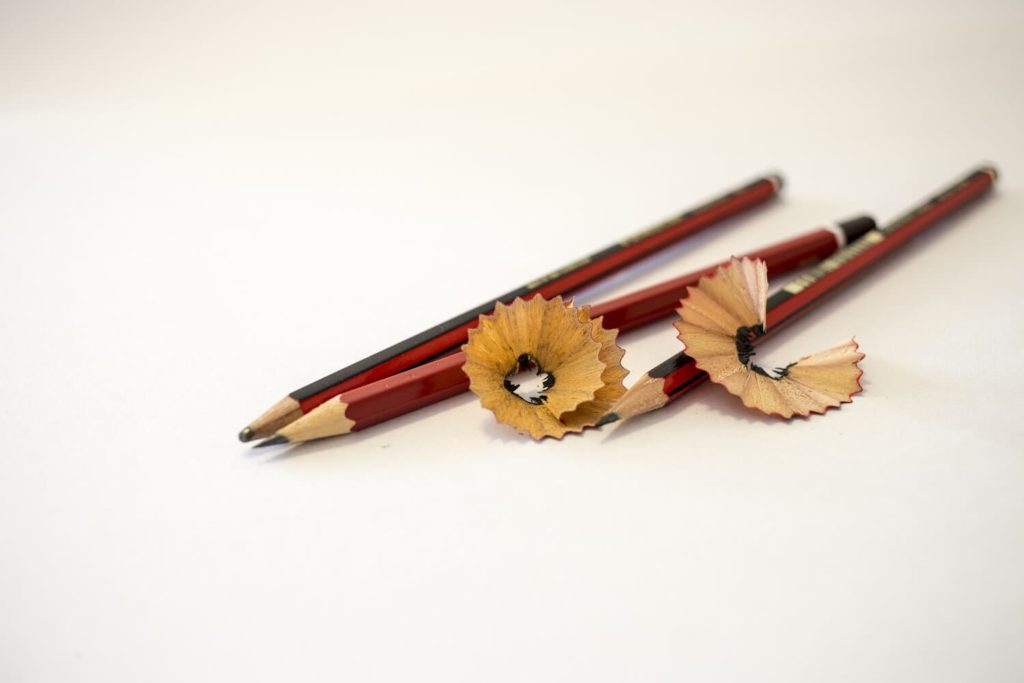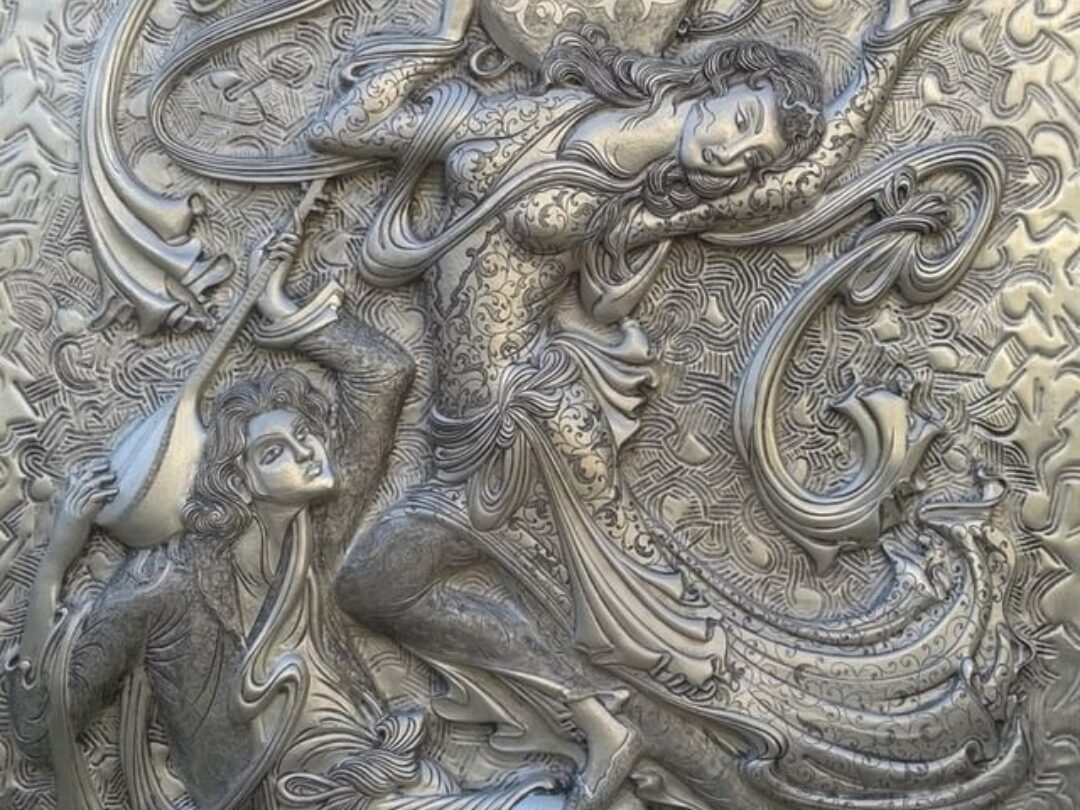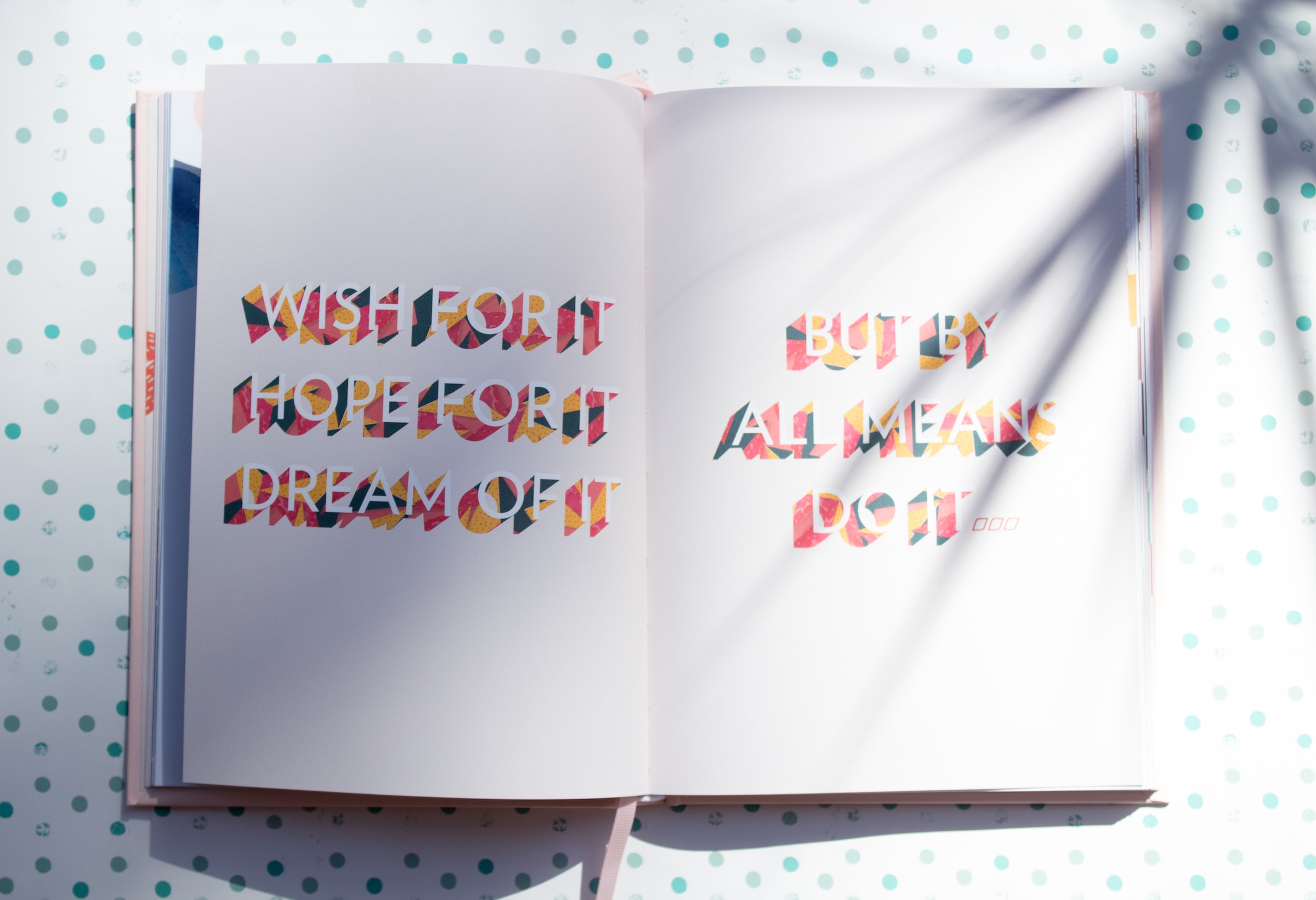
Who else is crazy enough to make a whole blog post about wooden vs mechanical pencils? Yeah, that’s ME!
Ok people here is the deal. I know it may sound stupid to talk about pencils. I mean, it’s just a pencil, right? But believe me, the tools and supplies you use directly impact the quality of your artwork.
To be talented is really important, but for me, using the right tools is important as well when it come to Islamic geometric patterns.
In this blog post, I will cover the differences between wooden and mechanical pencils to help you decide which one is the best for you.
It doesn’t necessarily mean that one is better than the other. I use both depending on what I do, but it’s good to know your tools and what is the best fit for you. So here we go.
1. SHARPENING
Certainly, the first difference is that you have to sharpen the ordinary pencil in order to use it. This means that you should have a good sharpener. I’ve always been obsessed with long points; I don’t know why.
Depending on the softness of the lead you should sharpen the pencil more often or less often because the shorter the lead, the wider the line on the paper.
Having a fine point in your pencils helps to draw thin lines resulting in more accuracy.
You don’t have these “problems” with a mechanical pencil. The width of the lead stays consistent throughout the whole process.
2. LEAD BRAKING ISSUES
When I just started with Islamic geometry, I immediately bought a mechanical pencil. It was a 0.3 mechanical pencil – the thinnest lead I could find – and it helped me master precision.
But I’m really heavy-handed, and the lead breaks every 2 seconds. Unfortunately, the lead is really thin, and if you are like me, this could be a problem. I was constantly refilling the pencil, and I’ve basically wasted my money. No jokes.
The wooden pencil’s lead can bear a lot more pressure than the mechanical one making it more suitable for heavy-handed people like me.
I still use a mechanical pencil, of course, but I prefer the ordinary one more.
3. ATTACHMENT
Ok, I know this might seem really romantic, but there is something soothing in using the good old pencil. It’s like the smell of a new book; you just can’t get enough of it.
To be able to draw this kind of art, which has its roots back in hundreds years, and use the same tools as the masters of the past it just makes me feel like I’m part of something bigger. Like I’m part of common destiny.
But wait, this is not the end. Recently I found out about lead holders or clutch pencils. It looks like a mechanical pencil with a 2mm lead.
Yeah, so basically I’ve written dozens of blog posts about the importance of a thin lead pencil just to pop up here and say “hey now I’ using a 2mm lead pencil”… But I have the right to change my mind, do I? Anyway, you can sharpen the lead with this lead sharpener just like an ordinary pencil, and the best thing is that it’s easier to find a hard lead of this size.
I hope this blog post was helpful for those of you who are still struggling in finding the perfect pencil. If you have any doubt or question, write it in the comments below.
If you want to learn more about pencil leads and which one is the best for geometrical drawings click here.
***Affiliate disclosure: This blog post contains affiliate links which means that I may earn a small commission – at no extra cost to you. This helps to support my work so that I can continue to make valuable free content for you.***
Wooden vs. Mechanical Pencils in geometric drawing
May 14, 2020



Thanks Sandy!
That was quite helpful! I am sure when we reach to our pencil cases we all have a favourite pencil. I always have to remind myself to sharpen my pencil, cos I can get carried away.
Thank you
Thanks Sandy as always for your post. I find it amazing that you use a 2mm with your very small pieces.
As to the issue of using pencils or mechanical pencils in compasses: The main reason I prefer to use a mechanical pencil in my compass is the difficulty in sharpening the leads. Any tips on doing this? I did find a sharpener for leads but it’s very difficult to use.
And incidentally I just bought a Rotring compass and discovered that the pen adapter only fits their pens and not theIr mechanical pencils and is not adjustable. I spent hours looking for a separate adjustable adapter – with no success.
Hey Vivien, unfortunately I don’t have any tips about lead sharpening. It’s easy to sharpen it as long as it’s long enough to be hold between two fingers. With regard to the Rotring compass I have a mechanical pencil which is really short and it is meant to be used with the compass. I thing I put it in the supplies list here in my website. Check it out and let me know if that can work for you too
Thanks Sandy for responding. We are limited in the sorts of compasses we can get in Australia. The Rotring compass I bought is different to yours. I can put tape around the mechanical pencils and hopefully they won’t move. Or perhaps just buy a cheaper compass that has an adjustable pen adapter and fit it.
Thanks again Sandy! As a confirmed pencil / pen / drafting equipment nerd, I was please to see that we agree on ‘real’ pencils. Like you I have both (an embarrassing number of each, tbh) but I will reach for a quality wood pencil first 90% of the time. And I just like sharpening them. (ya… nerd)
I also find the 2mm lead holders to be a very nice compromise between wood and mechanical pencils. The Rotring Rapid Pro especially has a wonderful heft and balance that you don’t get with wood. And 0.3mm lead is virtually useless for me; I went up to 0.7 for most of my daily use.
So see, we have a lot in common! Except that you actually make wonderful art; I mostly just think about and sharpen my pencils.